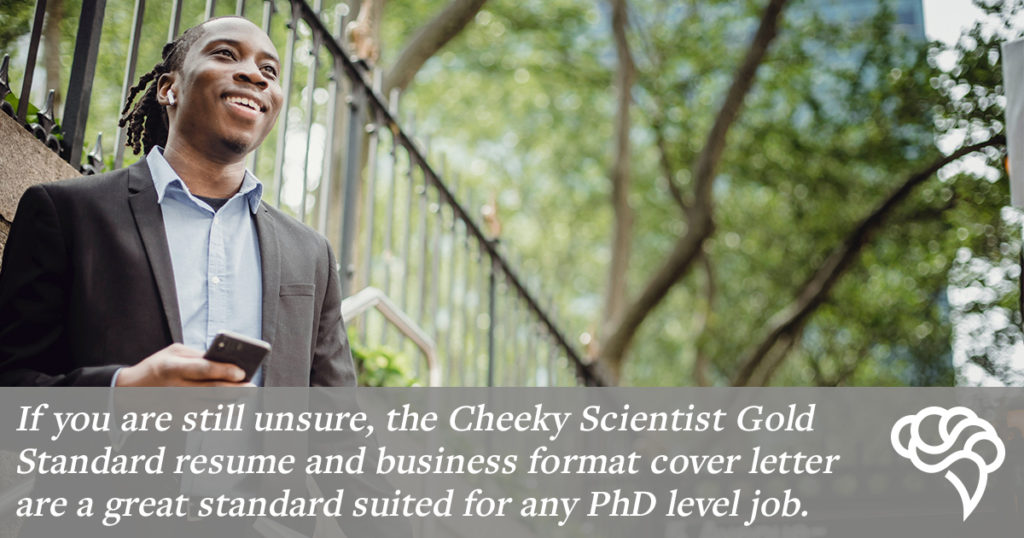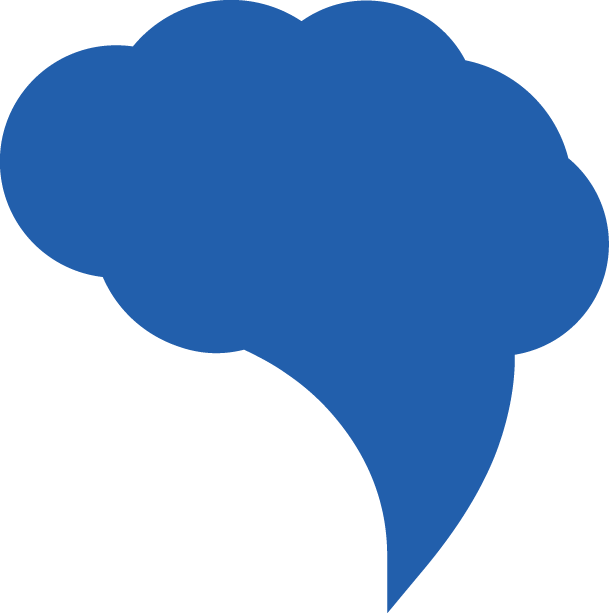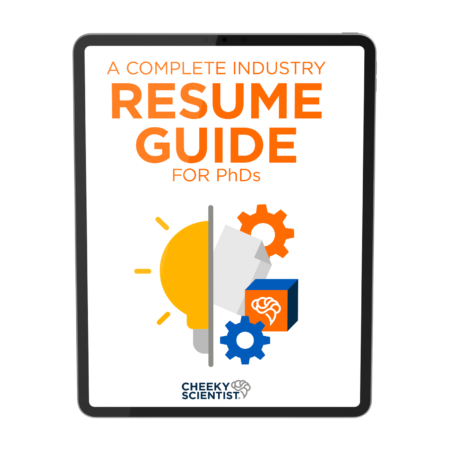Top 3 Cover Letter & Resume Combinations For Getting Hired

By the time I received my PhD, I had never held an industry job. I had never been trained in how to create a resume or cover letter.
After college, I watched those going into industry struggle to get jobs, but I was at ease with my PhD lab already picked out, my future was set. I followed these friends on social media as they got jobs…found spouses…started to have children. Meanwhile, I was still glued to my bench trying to squeeze my stipend into a survivable income.
I was no longer at ease. I was stuck and uncertain about my future.
As I neared the end of graduate school I realized it was time to retire my academic career and with it my Curriculum vitae in pursuit for something I hoped would be more fulfilling; an industry job.
I have written many publications, several grant proposals and countless conference abstracts. I had a lengthy and well developed academic CV. So, I thought it wouldn’t be too hard to write a resume. After all, it’s only 2 pages. It’s rigid in formatting like my thesis, short and direct like an abstract, and requires a level of detail and research on par with grant applications.
Surely my decades of academic experience had prepared me for entering the workforce.
I was so wrong. I was so unprepared.
In some ways there are similarities. Both grant applications and resumes are designed to be selling points in hopes to further your career but very few are ever read or funded.
A big difference between them is a perfect grant application may fund your research or a piece of your salary for a few years but the perfect resume/cover letter combination are the first steps to getting you hired and changing your life.
I didn’t think I had any experience. I had only been a student. And unlike academic papers or grant applications, I was never trained on how to create a resume or cover letter.
I didn’t know what would give me an advantage or what would help me get noticed. And so, I did what I was trained to do; research. I must have read hundreds of posts on resume and cover letter templates.
Did you know there are dozens of different kinds of resumes and cover letters, each with different format and function? In all the research I did, I never knew which was best for me.
I poured hours and days into creating this 1-2 page document all in hopes to get a stranger to even just glance at it. It was painstakingly frustrating.
Even worse, so much of the information I found was pandering to new undergraduates or entry level job applicants, not to PhDs, not to me.
I was confused and disappointed. Was my PhD even useful in industry? Did I make a mistake? Should I just try and find a postdoc?
I had spent half a decade behind a bench, writing hundreds of pages on scientific research only a few people in the world could understand just to be completely clotheslined by a 1-2 page document everyone else seems to know how to write.
Then, I watched my first Cheeky Scientist resume webinar. At last, there is a formula! Cheeky Scientist works with thousands of PhDs accumulating, digesting, and packaging information on how PhDs can break into industry.
So, if you’re done dumpster diving into the internet void of misplaced and subpar cover letter/ resume information let me help you.
Why Your Resume And Cover Letter Are Crucial To Job Success
A study at JobVite estimated for every one job posting there are 525 applications, a number which has probably increased in the pandemic era.
That’s 524 people you need to compete against and stand out from during each time you apply to a job.
After you submit the application, your resume will likely be scanned by a talent-management software, which weeds out nearly 50% of the applicants. From here, only about 20% will get an interview. How do you stand out among the competition?
You need a well formatted resume and cover letter curated to your target job.
If your resume gets passed the computer software, it might get in the hands of a hiring manager.
So, your resume must be smart and rigid enough to be valued by a computer algorithm but also needs that human touch, that will wow the hiring manager.
This connection can be hard, especially with a document like a resume.
Having a well written accompanying cover letter can make all the difference in connecting and standing out to a hiring manager.
A survey by CareerBuilder stated that 29% of hiring managers prefer to have a cover letter. But the cover letter has to be catered to the company. Forbes stated that 48% of non-customized cover letters are rejected. Your cover letter must not only include a direct greeting but should highlight a specific task and your value.
Your Cover Letter Should Complement Your Resume Without Rehashing It.
When I was first writing cover letters and resumes I just didn’t get it. I felt my cover letter was a regurgitation of my resume. It was rigid, it was not productive and it did not add any value.
My cover letters read very much like an academic paper, based in facts, very neutral and without much enthusiasm.
This was all wrong.
Think of a cover letter like an introduction to your resume or a book jacket synopsis of how and why you are the perfect candidate for this position.
It should highlight how your specific experience and skill sets fit with the company’s needs and job requirements.

2 Types Of Cover Letters
There are two main kinds of cover letters, the Business format and the T format.
In both cases you MUST address your cover letter to a specific person, and should state your interest (and enthusiasm for) the position you are applying for in the first sentence.
The rest of the cover letter should focus on demonstrating in a concrete way how your experience translates into transferable and technical skills relevant for the position.
In the business format this is done in paragraphs where one paragraph highlights a specific example of your transferable skill that perfectly aligns with the job description.
In the T format, this is done by inserting a two column table. Where the column on the left is the job requirements and the column on the right is how your qualifications fit that requirement.
This document is your opportunity to demonstrate to the employer your experience, communication skills, personality and excitement for the position.
5 Types Of Resumes
A resume on the other hand is your sales pitch.

A hiring manager should be convinced after a quick scan of the document that you are a valuable candidate.
Now, there are dozens of ways to format your resume, each with their own function.
We have curated all that information into 5 formats ideal for PhD-level positions: functional, combination, sidebar, recruiter, and the Cheeky Scientist gold standard resume template.
Each one highlights functional experience over education.
What you did and learned to get the PhD is more valuable than the PhD title.
In a functional and combination resume, your experience is organized by what you did instead of by when you did it. Combination resumes combine functional with chronological (which is the generic resume), highlighting both function and time.
Recruiter resumes are obviously for recruiters so they need to highlight your techniques and skill set allowing the recruiter to easily see how you fit into different jobs. Sidebar resumes are the most creative, using a two column format to display your achievements.
Which Resume / Cover Letter Flavor Combination Is Most Palatable?
What was highlighted here is by no means every type of resume and cover letter you can use.
But these documents are a package, they do not stand alone. Knowing how to combine a resume and a cover letter can be daunting. So which do you choose?
The cover letter / resume combination is important, they must match in tone and voice.
They must be cohesive and flow, connect but not rehash.
The answer to ‘which do you choose?’ is, it depends.
Applying with a combination resume and a T-format cover letter demonstrates you are focused on a specific role. It also shows you are up-to-date with current job search trends as you are straying away from the traditional chronological and business format while still providing a very well curated document.
However, some jobs require a more traditional and formal touch. For these jobs, the gold standard resume and business format are ideal. This combination is sophisticated, exemplifying your dependability and knowledge of best practices.
Other jobs are less focused on the position or title and are more goal oriented. For these jobs, I’d suggest a functional resume accompanied by a T-format cover letter. This pairing is extremely result focused and to the point. It puts aside duties, titles, prestige, and seniority and signifies your ability to execute tasks at the highest level.
The cover letter / resume flavors must compliment each other to create something appetizing.
Usually, you can get a sense of the flavor you should use by the tone of the job application.
Read it carefully, not only to identify which keywords to include but for the tone of the company. Do your research. This should give you an idea of the formality of the work environment and allow you to focus your application to suit the company’s standards.
The best way to know is to ask. Tap into your network. Talk to people that work at the company.
Reach out through LinkedIn or email. Set up an informational interview.
These are great and simple ways to get a better understanding of the company’s expectations and culture, which will help you to better curate your resume and cover letter for the desired job application.

If you’re ready to start your transition into industry, you can apply to book a free Transition Call with our founder Isaiah Hankel, PhD or one of our Transition Specialists. Apply to book a Transition Call here.

ABOUT SARAH SMITH, PHD
Sarah Smith, PhD, holds a degree in Biochemistry. A tireless science consultant at large, her rigorous pursuit of pristine labwork is unflinching. Yet Sarah’s keenest passion--guiding emergent academics into the business world--stems from personal experience with the transitional struggles she would have no PhD face alone.
More Written by Sarah Smith, PhD
































